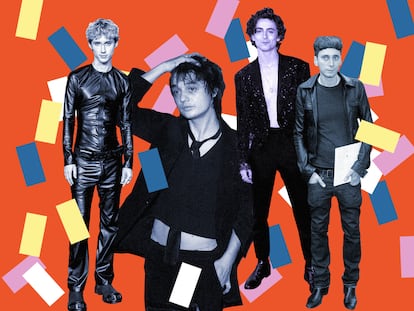Royals and rebels: The British influence on European fashion from plaid to Lady Di’s free spirit
An exhibit in The Hague pays tribute to Vivienne Westwood and illustrates the mix of tradition, reimagining and iconoclasm of styles created by other UK designers
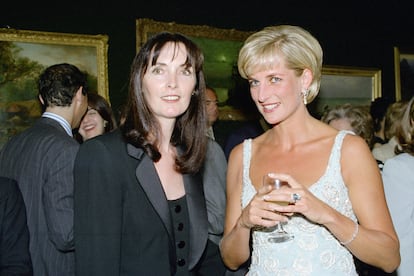

When English singer Harry Styles, 29, a former member of One Direction, dons a strawberry-print T-shirt, parcheesi green pants or a pearl necklace, he’s not just showing his personal style. His wardrobe also ends up creating trends. From sportswear and plaid to the British monarchy’s clothing, the United Kingdom has had quite an influence on fashion. One of its most famous designers, Vivienne Westwood, was also an activist ahead of her time; early on, she was an advocate of vegetarianism and decried the environmental damage caused by the mass production of clothing. British fashion has influenced Europe’s trends with the quality of its cut and tailoring, as well as with the daring of Mary Quant’s miniskirt and the mix of tradition and innovation by designers like Alexander McQueen. The Kunstmuseum (Art Museum) in The Hague, Netherlands, has dug into its collection to mount the Royals & Rebels exhibit. From chic to punk, this unique exhibition pays tribute to Westwood — who died in 2022 at the age of 81 — and will remain open until January 7, 2024.
The museum has a total of 50,000 pieces of clothing and accessories, plus 15,000 illustrations. It is now exhibiting about 150, several of which are from private collections and other art galleries. The result is a thematic journey full of contrasts, from the 18th century to the 21st century, traveling from the countryside to the city to the palace. The route traverses flower-filled gardens with ladies draped in silks, passes the Ascot horse races with women dressed to the nines, and visits the Wimbledon tennis tournament, with its mid-length skirts. Along the way, spectators view the strident striped jackets worn when following the Cambridge-Oxford regattas, and there’s a parade of trench coats of varying lengths, textures and shapes. The exhibit displays opulent corseted dresses and the simple floral frocks of Welsh designer Laura Ashley, whose prints were all the rage in the 1970s and 1980s. And, of course, it includes styles from the London Underground, full of 1960s miniskirts and geometric fabrics.
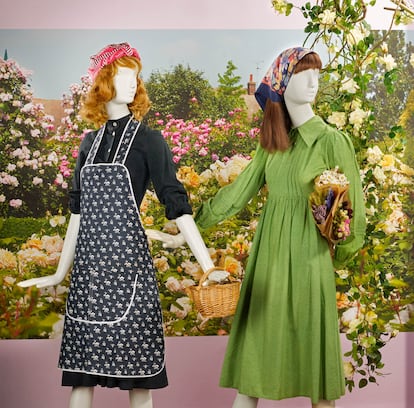
Alongside all of this, there’s the style of Vivienne Westwood, “a rebel who started with punk and then moved on to the new romantics of the 1980s and the so-called British Heritage; the latter was interested in the study of history and the use of Scottish painting,” explains Madelief Hohé, the curator of the exhibition. “Many of her dresses have become classics and she has influenced her colleagues, even the younger ones. But she [always] kept the punk element within her. She would even return home [but] always by [taking] a different route to keep her curiosity fresh,” Hohé says. Westwood’s clothes initially reflected the political and social context of the 1970s and the disillusioned youth in the UK. In that environment, she experimented, provoked, irritated and ultimately inspired. “Over time, her T-shirts with vindictive slogans have become classics and the reuse of the clothes she promoted is [clear].” An example of the recovery of a famous dress is the wedding dress worn by American actress Sarah Jessica Parker in her role as Carrie Bradshaw in the film Sex and the City (2008). In the movie, Parker’s character was jilted at the altar; the dress reappeared in the series And Just Like That... (2023), which is set a decade after the film. That dress is featured in one of the rooms and is surprisingly small in size.
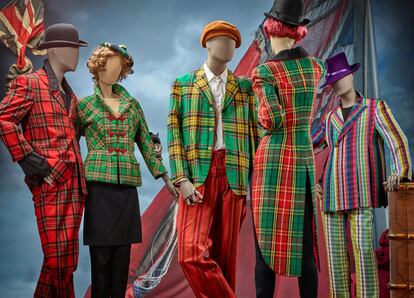
Surrounded by silk, wool and cotton dresses, along with mannequins who wear hairstyles and hats that reflect the periods they represent, Hohé emphasizes the impact of British fashion in men’s clothing, especially in the 19th century: ”[The style was] sober, but distinguished, since after the French Revolution menswear’s frills, which had set the tone until then, were disappearing.” Over time, British tailors gained visibility and eventually made a name for themselves in the neighboring country. The most representative was Charles Frederick Worth, who also gained a substantial American clientele from his Paris headquarters. In the 18th century, France and the United Kingdom were leading the way in style and influencing the fashion of other European courts. “There were French-style robes and English-style robes. The cut is the same. The silhouette changed and that lasted well into the 19th century, when the development of fashion changed the horizon. In any case, British style was on the rise because of the cut and tailoring,” says César Rodríguez Salinas, an expert in fashion and textile restoration at the same museum. The years went by, and then came Coco Chanel.

The exhibit displays a 1966 tweed dress with a mix of colored threads by the legendary French designer. Originally used for casual and masculine garments, she adapted the fabric with light textures to free women from corsets. Chanel’s stay in the United Kingdom was key to achieving this, because she was inspired by the sporty suits of her lover, Hugh Grosvenor, Duke of Westminster. In 1925, she launched her first collection using tweed.
Along with pieces by Edward Molyneux, Stella McCartney, John Galliano and Charles Jeffrey Loverboy, among others, another “free spirited” trendsetter is included among the signature pieces: Princess Diana, “who was one of the first royal women to jettison rigidity, giving an example of social approachability still followed today in many courts,” Rodríguez Salinas says. A showcase features the Catherine Walker dress that Lady Di wore during the summer of her death in 1997. Next to it, there’s a Karl Lagerfeld for Chanel suit jacket. The first is short, luminous, delicate with embroidered roses. The other garment is black, and Princess Diana wore it in times of grief.
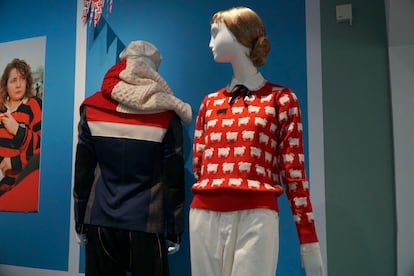
At the end, there’s the red wool sweater with white sheep and one black one that Lady Di wore on several occasions in the 1980s. She had two of them and one was ruined. The manufacturer, Warm & Wonderful, sent her a new one with the black sheep knitted elsewhere. “It’s been 30 years, and it still sells. It’s ‘Diana’s sweater,’ which conveyed a subtle message to people.... The original will be auctioned soon, and it [reflects] how she felt in a way… as someone who didn’t fit in with the royal family,” says Hohé. The museum has bought a copy for its collection, and it is impossible to avoid smiling at these lambs of the “royal rebel” who have led the way for three decades.
Sign up for our weekly newsletter to get more English-language news coverage from EL PAÍS USA Edition
Tu suscripción se está usando en otro dispositivo
¿Quieres añadir otro usuario a tu suscripción?
Si continúas leyendo en este dispositivo, no se podrá leer en el otro.
FlechaTu suscripción se está usando en otro dispositivo y solo puedes acceder a EL PAÍS desde un dispositivo a la vez.
Si quieres compartir tu cuenta, cambia tu suscripción a la modalidad Premium, así podrás añadir otro usuario. Cada uno accederá con su propia cuenta de email, lo que os permitirá personalizar vuestra experiencia en EL PAÍS.
¿Tienes una suscripción de empresa? Accede aquí para contratar más cuentas.
En el caso de no saber quién está usando tu cuenta, te recomendamos cambiar tu contraseña aquí.
Si decides continuar compartiendo tu cuenta, este mensaje se mostrará en tu dispositivo y en el de la otra persona que está usando tu cuenta de forma indefinida, afectando a tu experiencia de lectura. Puedes consultar aquí los términos y condiciones de la suscripción digital.
More information
Archived In
Últimas noticias
Most viewed
- David King, chemist: ‘There are scientists studying how to cool the planet; nobody should stop these experiments from happening’
- Reinhard Genzel, Nobel laureate in physics: ‘One-minute videos will never give you the truth’
- Mexico completes its trade shift with the entry into force of tariffs on China and countries without trade agreements
- Oona Chaplin: ‘I told James Cameron that I was living in a treehouse and starting a permaculture project with a friend’
- Sinaloa Cartel war is taking its toll on Los Chapitos

